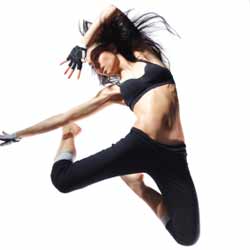Dance Educator Jobs
If you love kids and teaching, then becoming a dance educator is a great match. Many dance educators enjoy a flexible work schedule, and time off during school breaks. The National Dance Education Organization found in a recent study that over 6000 US schools offer dance as a part of their K-12 curriculum. Over 665 colleges and universities offer dance major and dance minor programs. Dance educators can be found in the public school system, the private school system, and the university level. An estimated 3.5 million children receive dance instruction from dance specialists.
The requirements for becoming a dance educator vary from state to state, but most schools require dance instructors to have a degree. A teacher’s certification may also be required, which will require additional time and training. However, most colleges offer teacher credentialing programs as part of their curriculum, and there are distance and online learning opportunities as well. To find out exactly what the requirements are in your area, check your state’s commission on teacher credentialing online.
In 2000, President Clinton’s Educate America Act legislated that dance was a core curriculum subject like math or science. This means most dance educators are seeking teacher employment in the nation’s largest educational system: K-12. The majority of K-12 schools offer dance as part of their physical education curriculum, while a small percentage offer dance as a stand-alone program. Read about PE teacher jobs in our School Teaching section.
While not all schools have the budget to cover a full year’s program, some opt for a semester-long program each year. Waldorf schools even offer their own specialized form of dance education, called eurythmy. Developed by Rudolf Steiner, eurythmy connects movement to language and has been found to be a powerful learning tool.
Certification as a eurythmy specialist can lead to further dance employment opportunities.
The curriculum goals for most K-12 schools are as follows:
- Exploration of the historical, cultural, and social factors of dance
- Learning the concept of discipline through dance, which can then be applied to other subjects
- Developing skills of improvisation and organization of movement
- Growth of personal and interpersonal skills
- Development of listening skills
- Thoughts and emotions are grounded in physical experience
- Emphasis of the importance of physical exercise and healthful living
In a recent study, it was shown that test scores in math and English were higher for students whose schools offer dance as part of their curriculum. This underscores the theory that dance develops self-confidence, community-building and mental acuity. For many dance educators, working within the school system presents more employment opportunities than other dance jobs such as dance performers or dance choreographers. The satisfaction of working with children and witnessing their growth is the best payback of all.
Becoming a dance instructor at a university is a long-term goal since it requires many years of training and research. If you would like to teach dance at a university, be aware that these positions usually require a master’s degree and extensive dance experience. You will need a solid foundation of knowledge of subjects such as dance history, dance theory, various styles of teaching, and anatomy and kinesiology. Many dancers decide to pursue this level of teaching after having a successful professional dance career. Teaching within a dance company can also help you gain experience to work at a university. For many university level instructors, it is very satisfying to contribute original research and lead the next generation of dancers.


 Teach English in Asia
Teach English in Asia  Cruise Ship Jobs
Cruise Ship Jobs  Alaska Fishing Industry Jobs
Alaska Fishing Industry Jobs  Sharing Economy / Gig Economy
Sharing Economy / Gig Economy 